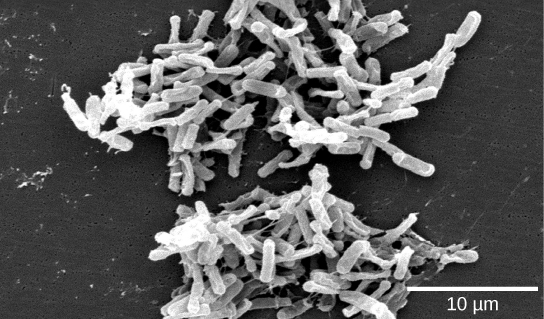| << Chapter < Page | Chapter >> Page > |
One of the most useful and interesting examples of the use of prokaryotes for bioremediation purposes is the cleanup of oil spills. The importance of prokaryotes to petroleum bioremediation has been demonstrated in several oil spills in recent years, such as the Exxon Valdez spill in Alaska (1989) ( [link] ), the Prestige oil spill in Spain (2002), the spill into the Mediterranean from a Lebanon power plant (2006), and more recently, the BP oil spill in the Gulf of Mexico (2010). To clean up these spills, bioremediation is promoted by the addition of inorganic nutrients that help bacteria to grow. Hydrocarbon-degrading bacteria feed on hydrocarbons in the oil droplet, breaking down the hydrocarbons. Some species, such as Alcanivorax borkumensis , produce surfactants that solubilize the oil, whereas other bacteria degrade the oil into carbon dioxide. In the case of oil spills in the ocean, ongoing, natural bioremediation tends to occur, inasmuch as there are oil-consuming bacteria in the ocean prior to the spill. In addition to naturally occurring oil-degrading bacteria, humans select and engineer bacteria that possess the same capability with increased efficacy and spectrum of hydrocarbon compounds that can be processed. Under ideal conditions, it has been reported that up to 80 percent of the nonvolatile components in oil can be degraded within one year of the spill. Other oil fractions containing aromatic and highly branched hydrocarbon chains are more difficult to remove and remain in the environment for longer periods of time.

A particularly fascinating example of our normal flora relates to our digestive systems. People who take high doses of antibiotics tend to lose many of their normal gut bacteria, allowing a naturally antibiotic-resistant species called Clostridium difficile to overgrow and cause severe gastric problems, especially chronic diarrhea ( [link] ). Obviously, trying to treat this problem with antibiotics only makes it worse. However, it has been successfully treated by giving the patients fecal transplants from healthy donors to reestablish the normal intestinal microbial community. Clinical trials are underway to ensure the safety and effectiveness of this technique.

Scientists are also discovering that the absence of certain key microbes from our intestinal tract may set us up for a variety of problems. This seems to be particularly true regarding the appropriate functioning of the immune system. There are intriguing findings that suggest that the absence of these microbes is an important contributor to the development of allergies and some autoimmune disorders. Research is currently underway to test whether adding certain microbes to our internal ecosystem may help in the treatment of these problems as well as in treating some forms of autism.
Pathogens are only a small percentage of all prokaryotes. In fact, our life would not be possible without prokaryotes. Nitrogen is usually the most limiting element in terrestrial ecosystems; atmospheric nitrogen, the largest pool of available nitrogen, is unavailable to eukaryotes. Nitrogen can be “fixed,” or converted into ammonia (NH 3 ) either biologically or abiotically. Biological nitrogen fixation (BNF) is exclusively carried out by prokaryotes. After photosynthesis, BNF is the second most important biological process on Earth. The most important source of BNF is the symbiotic interaction between soil bacteria and legume plants.
Microbial bioremediation is the use of microbial metabolism to remove pollutants. Bioremediation has been used to remove agricultural chemicals that leach from soil into groundwater and the subsurface. Toxic metals and oxides, such as selenium and arsenic compounds, can also be removed by bioremediation. Probably one of the most useful and interesting examples of the use of prokaryotes for bioremediation purposes is the cleanup of oil spills.
Human life is only possible due to the action of microbes, both those in the environment and those species that call us home. Internally, they help us digest our food, produce crucial nutrients for us, protect us from pathogenic microbes, and help train our immune systems to function correctly.

Notification Switch
Would you like to follow the 'Biology 1308 bonus credit chapters--from openstax "biology"' conversation and receive update notifications?